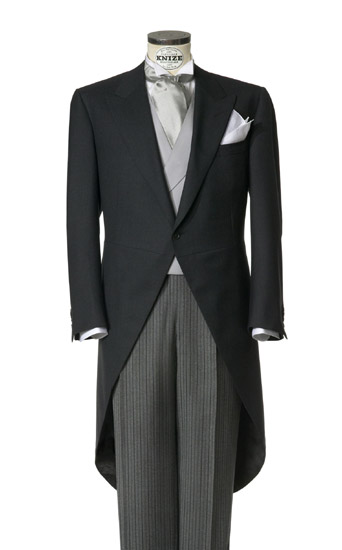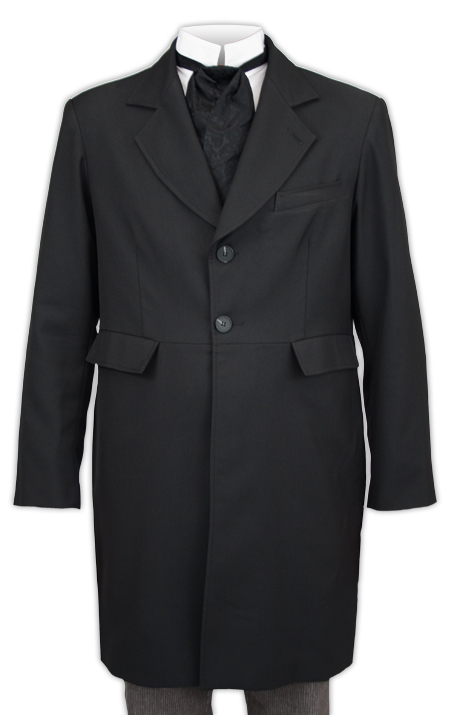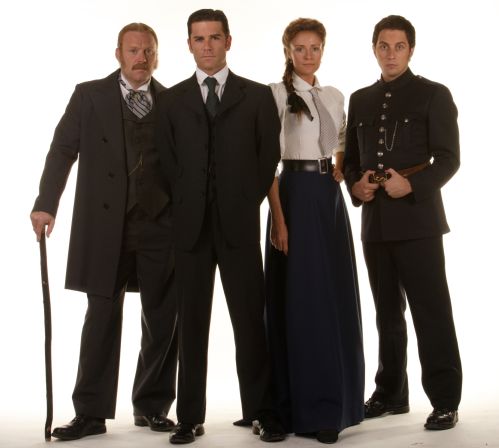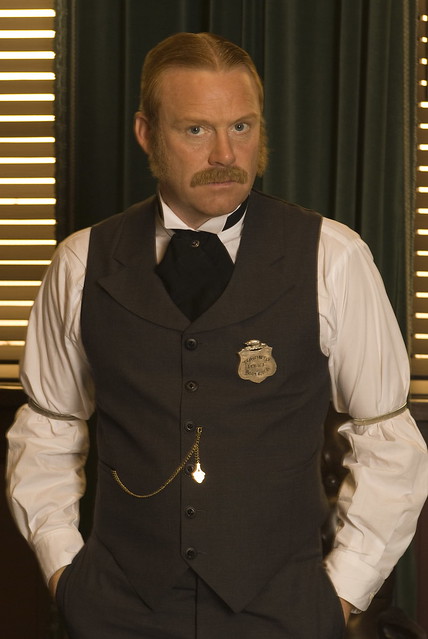Post by shangas on Dec 4, 2011 2:19:26 GMT
One thing I love about MM is how bright and vibrant everything is. Especially the clothes.
Being a dude (checks...yep, everything's there), I'm gonna concentrate on Victorian MEN'S clothing in this thread (kinda pointless for me to try and discuss ladies' clothes). The ladies are welcome to dicuss and add information about clothes of the fairer sex at their leisure.
The sheer attention to detail in the costuming in Murdoch Mysteries is amazing. I don't think I've seen such an agonisingly eyebendingly high amount of detail since the Sherlock Holmes series of the 1980s with the late and great Jeremy Brett and Edward Hardwicke (may they rest in peace). So here's a little rundown on Victorian clothing (or at least, men's clothing, for me).
The Suit
Almost every man who isn't a police-constable in MM wears a suit. In Victorian times, the suit was one of the most commonly worn things imaginable. It held none of the snobby, classy, tryhard connotations that people associate with it today. Wearing a nice suit was a matter of pride, self-presentation and confidence.
The elements of the three-piece suit, the Jacket, the Waistcoat and the Trousers came together over the course of centuries. The waistcoat came first in the 1600s. Trousers showed up in the early 1800s, popularised by Beau Brummell. The lounge-jacket was descendant from the heavier, thicker Frock Coats of the earlier Victorian era.
In "Confederate Treasure", Terrance Myers is wearing a frock-coat. As you'll see if you watch that episode, the frock coat is ENORMOUS. Much bigger than the conventional suitcoat worn by Murdoch.
In the episode titled "Still Waters" where the issue of Hazing and acceptance is explored, Murdoch comments on how people do things just because "that's how it's done", such as, as he gives as an example: Wearing a full suit in summertime, when such clothing might be uncomfortable, but people do it anyway.
Wearing a three-piece suit (or contrasting jacket, trousers and waistcoat) was part of Victorian morality and social acceptability at the time.
The Shirt
Why, you might ask, would Murdoch wear a full (and black!) suit in summertime? Granted, perhaps the weather might not be that hot, but still. Why? In winter it's obvious. The waistcoat and jacket provide essential warmth. But in summer, the reason is not so obvious.
Now, be warned, what I'm about to say might disgust some of the cleaner people around here.
For those whose chief concern in life is the maintenance of personal hygeine, turn away now.
The purpose of the suit (or contrasting jacket, waistcoat and trousers) was to cover up your shirt.
Today, it's common for men to go around with just trousers, tie and shirt. In Murdoch's day, such a thing would've been offensive, if not even scandalous. You'll notice in the series that at almost no time do we see Murdoch out of his suit, except when he's doing heavy or potentially messy work.
The reason for this is that prior to the second quarter of the 20th century, a man's shirt was treated as an undergarment. Once you put on your shirt, you would wear it for a week. Or two. Or three. Or a month. Or more.
To people today, wearing ONE shirt for a whole month and not changing it would be considered repulsive. But in Victorian times it happened every day. The reason for this is because it took so long to wash a shirt.
To wash clothes, you needed the hot water (which you had to boil in the copper or on the stove), you needed the soda-crystals. You needed the washboard. You had to soak, scrub, dolly, scrub, soak, scrape, rub, rinse, soak, rinse and mangle. A wash-cycle that today might take an hour or two with a machine in Victorian times, could take up to a working week.
And that's not counting the drying. The ironing. The starching and the folding. Add another two days of work.
Because it took so long to wash clothes, shirts were worn for as long as possible between washes. And because of this, they could get incredibly dirty. This is why it was NEVER done to show your shirt in public. You kept it under your waistcoat and under your jacket at all times. And the collar and cuffs (which in Victorian times, were detachable) would be removed every few days and replaced with fresh cuffs and collar.
Inspector Brackenreid wears a 'Wing' collar in most episodes. As do a number of other characters. It was an extremely popular collar.
Murdoch wears a 'Club' collar.
Braces (suspenders for the Yanks)
In Victorian times, few men wore belts. To hold up your trousers, a man wore braces (or suspenders to the Americans). Braces were invented in 1820 by Albert Thurston (the Albert Thurston Co. still manufactures braces today, nearly 200 years later). Braces were buttoned onto buttons on the inside of the waistband of your trousers and the slide-clips were adjusted for proper length.
Murdoch wears Y-backed braces (which you see in "The Murdoch Identity"'s open scenes). There were also X-backed braces.
Because braces were also considered undergarments along with the shirt, the waistcoat was used to cover these as well.
Hats
Hats are EVERYWHERE in MM.
Murdoch wears a Homburg (with the long dent in the crown).
Insp. Brackenreid wears a Top Hat.
The students at the University ("Big Murderer on Campus") wear Boaters (the flat, round straw hats).
Boater hats were extremely popular. Even ladies wore them (see Dr. O. in "Body Double"). Boaters came from Venice, Italy where they were (and still are) the traditional headgear of Venetian gondoliers, to protect them from the strong Italian sun.
Happy to discuss any aspects of Victorian men's clothing (which may or may not relate to the MM series) in this thread.
Being a dude (checks...yep, everything's there), I'm gonna concentrate on Victorian MEN'S clothing in this thread (kinda pointless for me to try and discuss ladies' clothes). The ladies are welcome to dicuss and add information about clothes of the fairer sex at their leisure.
The sheer attention to detail in the costuming in Murdoch Mysteries is amazing. I don't think I've seen such an agonisingly eyebendingly high amount of detail since the Sherlock Holmes series of the 1980s with the late and great Jeremy Brett and Edward Hardwicke (may they rest in peace). So here's a little rundown on Victorian clothing (or at least, men's clothing, for me).
The Suit
Almost every man who isn't a police-constable in MM wears a suit. In Victorian times, the suit was one of the most commonly worn things imaginable. It held none of the snobby, classy, tryhard connotations that people associate with it today. Wearing a nice suit was a matter of pride, self-presentation and confidence.
The elements of the three-piece suit, the Jacket, the Waistcoat and the Trousers came together over the course of centuries. The waistcoat came first in the 1600s. Trousers showed up in the early 1800s, popularised by Beau Brummell. The lounge-jacket was descendant from the heavier, thicker Frock Coats of the earlier Victorian era.
In "Confederate Treasure", Terrance Myers is wearing a frock-coat. As you'll see if you watch that episode, the frock coat is ENORMOUS. Much bigger than the conventional suitcoat worn by Murdoch.
In the episode titled "Still Waters" where the issue of Hazing and acceptance is explored, Murdoch comments on how people do things just because "that's how it's done", such as, as he gives as an example: Wearing a full suit in summertime, when such clothing might be uncomfortable, but people do it anyway.
Wearing a three-piece suit (or contrasting jacket, trousers and waistcoat) was part of Victorian morality and social acceptability at the time.
The Shirt
Why, you might ask, would Murdoch wear a full (and black!) suit in summertime? Granted, perhaps the weather might not be that hot, but still. Why? In winter it's obvious. The waistcoat and jacket provide essential warmth. But in summer, the reason is not so obvious.
Now, be warned, what I'm about to say might disgust some of the cleaner people around here.
For those whose chief concern in life is the maintenance of personal hygeine, turn away now.
The purpose of the suit (or contrasting jacket, waistcoat and trousers) was to cover up your shirt.
Today, it's common for men to go around with just trousers, tie and shirt. In Murdoch's day, such a thing would've been offensive, if not even scandalous. You'll notice in the series that at almost no time do we see Murdoch out of his suit, except when he's doing heavy or potentially messy work.
The reason for this is that prior to the second quarter of the 20th century, a man's shirt was treated as an undergarment. Once you put on your shirt, you would wear it for a week. Or two. Or three. Or a month. Or more.
To people today, wearing ONE shirt for a whole month and not changing it would be considered repulsive. But in Victorian times it happened every day. The reason for this is because it took so long to wash a shirt.
To wash clothes, you needed the hot water (which you had to boil in the copper or on the stove), you needed the soda-crystals. You needed the washboard. You had to soak, scrub, dolly, scrub, soak, scrape, rub, rinse, soak, rinse and mangle. A wash-cycle that today might take an hour or two with a machine in Victorian times, could take up to a working week.
And that's not counting the drying. The ironing. The starching and the folding. Add another two days of work.
Because it took so long to wash clothes, shirts were worn for as long as possible between washes. And because of this, they could get incredibly dirty. This is why it was NEVER done to show your shirt in public. You kept it under your waistcoat and under your jacket at all times. And the collar and cuffs (which in Victorian times, were detachable) would be removed every few days and replaced with fresh cuffs and collar.
Inspector Brackenreid wears a 'Wing' collar in most episodes. As do a number of other characters. It was an extremely popular collar.
Murdoch wears a 'Club' collar.
Braces (suspenders for the Yanks)
In Victorian times, few men wore belts. To hold up your trousers, a man wore braces (or suspenders to the Americans). Braces were invented in 1820 by Albert Thurston (the Albert Thurston Co. still manufactures braces today, nearly 200 years later). Braces were buttoned onto buttons on the inside of the waistband of your trousers and the slide-clips were adjusted for proper length.
Murdoch wears Y-backed braces (which you see in "The Murdoch Identity"'s open scenes). There were also X-backed braces.
Because braces were also considered undergarments along with the shirt, the waistcoat was used to cover these as well.
Hats
Hats are EVERYWHERE in MM.
Murdoch wears a Homburg (with the long dent in the crown).
Insp. Brackenreid wears a Top Hat.
The students at the University ("Big Murderer on Campus") wear Boaters (the flat, round straw hats).
Boater hats were extremely popular. Even ladies wore them (see Dr. O. in "Body Double"). Boaters came from Venice, Italy where they were (and still are) the traditional headgear of Venetian gondoliers, to protect them from the strong Italian sun.
Happy to discuss any aspects of Victorian men's clothing (which may or may not relate to the MM series) in this thread.

 Is a frock coat similar to a morning coat? Those are quite long for a suit jacket/coat and I know they were popular in the American South. They've become even somewhat popular for men to wear now to get married in. I dressed as Julia for Halloween this year. It's hard to find women's boater hats today, even from costume shops. So I forewent the hat. I bought a Victorian era walking skirt (I wish I could wear those every day) and Victorian style lace up boots. I got them both here:
Is a frock coat similar to a morning coat? Those are quite long for a suit jacket/coat and I know they were popular in the American South. They've become even somewhat popular for men to wear now to get married in. I dressed as Julia for Halloween this year. It's hard to find women's boater hats today, even from costume shops. So I forewent the hat. I bought a Victorian era walking skirt (I wish I could wear those every day) and Victorian style lace up boots. I got them both here: 













